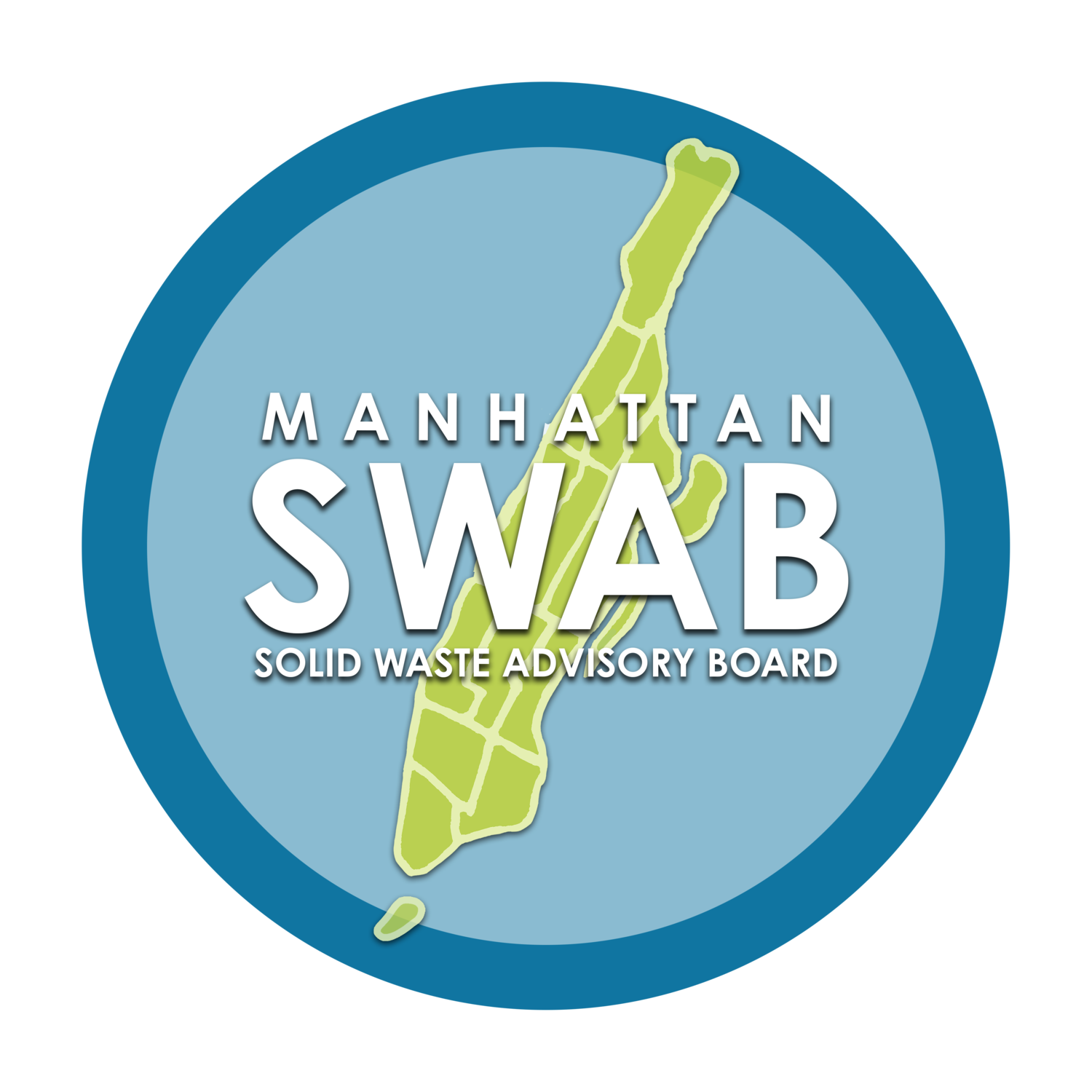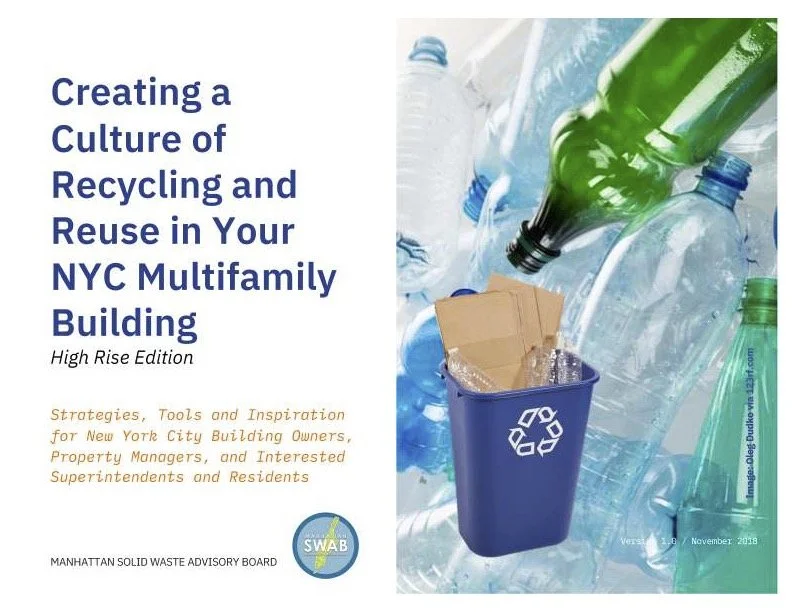Recycling Guides & FAQS for Multifamily Buildings
The MSWAB’s Residential Recycling committee has produced two free Guides (Recycling and Organics), plus detailed Case Studies to help residents and managers of NYC multi-family buildings improve rates of residential recycling
Organics Guide for Multifamily Buildings
Hillary Bosch from DSNY and Jacquelyn Ottman, a Zero Waste Advocate, discuss the requirements, how-to's, and best practices of organics collection and composting. Success will require intense mobilization for most buildings, but there is still time to develop a plan that encourages full participation, and will help you meet DSNY's standards. Supers, managing agents, residents, green teams, and staff will all pick up useful tips from this webinar.
Recycling Guide for Multifamily Buildings
Strategies, tools, and inspiration to creating a culture of recycling and reuse in your multifamily building. Specifically written for New York City building owners, property managers, and interested superintendents and residents.
Case Studies
NYC Waste & Recycling FAQs
How much WASTE does New York generate?
NYC generates nearly 30 tons of trash every year. Only ~20% is recycled.
However, if everything recyclable item were recycled, 68% of residential trash and 75% of commercial trash could be diverted from landfills to other solutions. [image on the left represents results of DSNY’s residential waste characterization study]
how is waste managed in nyc?
Depending on the type and where it comes from, NYC’s waste is collected by different groups and goes to different locations
New York City has a “dual stream” system that requires residents to separate their waste from recyclables, and further separate recyclables into two groups: bottles, cans, and containers and mixed paper
Depending on the type and where it comes from, NYC’s waste is collected by different groups
The Department of Sanitation (DSNY) picks up residential and educational waste and recyclables. NYC relies on general tax revenue to fund waste collection. This contrasts to most major metropolitan areas, which charge residents based on how much trash they produce, providing incentive to minimize refuse generation
Private commercial firms do not receive free garbage pick-up by the city government and are instead required to pay private firms called “carters” to haul their waste and recyclables. Commercial firms are charged a fee based on the amount of waste they generate, incentivizing cost control
For other types of waste such as electronics and textiles, individuals are encouraged to visit dropping off sites. You can visit DSNY’s SAFE disposal events page and textile collection page for more information.
how do i recycle my items?
-
Cardboard items like boxes, cartons, and clean/dry paper cups and pizza boxes can be recycled in residential buildings
Half of NYC’s cardboard is recycled at Pratt on Staten Island, which makes half of NYC’s pizza boxes
-
In NYC, C&D accounts for more than 60% of the solid waste stream. Around 40% of C&D materials are recycled
The city does mandate or manage recycling of C&D waste. Rather, is managed primarily by private transfer stations and processors
-
Citizens can drop off unwanted electronics at residential building (if enrolled in the eCycle program) at the LES Ecology Center’s E-waste Warehouse, at SAFE Collection Events, and Special Waste Drop-Off Sites.
-
Citizens can recycle glass bottles and jars in their residential buildings
Glass is sent to Sims Municipal Recycling facility in Sunset Park, Brooklyn for processing and resale
-
Items like metal cans, foil trays, and wire hangers can be recycled inside residential buildings
Metals are sent to Sims Municipal Recycling Facility in Sunset Park, Brooklyn for processing, separation, and resale
-
Food scraps, yard trimmings, and soiled paper comprise about 1/3 of NYC’s residential waste. These organic materials that can be composted and/or digested and turned into fertilizers or biogas
Manhattan residents who live in buildings with 10+ units can arrange for pickup or drop-off compostable items at these locations
The organic material goes to the Lower East Side Ecology Center to make compost or the Anaerobic Digesters to make biogas, a form of energy
-
Paper products like newspapers, magazines, computer paper, mail, paper bags, and soft cover books can be recycled in residential buildings
Almost 20% of NYC’s waste is recyclable paper and cardboard. Half of the city’s paper waste is sent to Pratt Industry’s paper mill on Staten Island to be recycled into pizza boxes
-
Item descriptionPlease never dispose of pharmaceuticals by flushing them in the toilet, pouring them down the drain, and or putting them in the garbage.
Rather, dispose of unwanted pharmaceuticals at a safe disposal event or visit the NY State Department of Conservation’s website or this ArcGIS-driven page to find a safe disposal pharmacy or police station near you.
You can also find safe disposal sites for used needles or other "sharps” by entering your zip code into this map.
-
NYC can recycle rigid plastics such as milk jugs and water bottles, but not soft plastics such as shopping bags
Plastic waste goes to Sims Municipal Recycling Facility
This resource summarizes opportunities to recapture plastic
-
-
The city sponsors the free ReFashion NYC program to collect clothing, shoes, towels, and rags, providing donation bins to residential apartments and picking up the material when the bins are full. Items are donated to Housing Works.
For those without a bin in their building, DSNY offers a map to show where textiles can be dropped off





